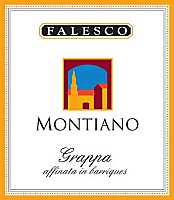
Wine Culture and Information since 2002 - Volume 22
 Wine Culture and Information since 2002 - Volume 22 |
|
CarrotCarrot is one of the most common vegetables, rich in Vitamin A, B, C and betacarotene, useful for sunbathing, strengthening teeth and bones, reinforces the immunitary system and offers a good protection against cancer |
|
Carrot, according to binomial nomenclature called “Daucus carota”, is a herbaceous plant belonging to the family of umbelliferae is also one of the most common vegetables. Its name derives from the Greek Karotón and grows both wild or cultivated, however wild carrot has a hard root which is not edible. Carrot is common in Europe, Asia and Northern Africa and from its seeds, having digestive and aperitif properties, is obtained an oil used by the industry of liquors and cosmetics. Carrot is a plant reaching one meter (3 feet) in height, with white flowers having five petals, grouped in umbels and a long orange root. It blossoms from May to December and the edible part is the root. There are about sixty different varieties of carrots in the world.
|
|
Carrot comes from South Eastern Europe and from Western Asia, whereas according others, it comes from the Himalayan area of Afghanistan and Hindu Kush. There are few information about the history of the plant, however it is known Greeks and Romans cultivated the plant for the extraction of medicinal substances. In the first century after Christ, it was known by Romans; it is in fact depicted in some frescoes at Pompeii and Pliny praises its cicatrizant and diuretic properties as well as for its stimulatory effects on stomach. Crunchy carrots, tender and of an appealing orange color, rich in vitamin A that we are used to see today are not the same found at the times of our ancestors. During Roman times carrots were thin and knotty, with a harsh taste and a whitish heart, the color was basically purple and it was, according to what our ancestors wrote, “as hard as a stone”. It is not known the exact time in which carrots become a plant cultivated in gardens. It was mentioned in cookbooks of the Renaissance, in which were suggested a tisane of carrot flowers against epilepsy.
The properties of carrots are today well known, however this extraordinary vegetable has some qualities not known by everyone. The most known properties are the availability of vitamins, mainly vitamin A as well as B and C. Another well known substance is betacarotene, which improves sight and it is a fundamental component for the production of melanin, that is the substance responsible for the coloring of cells useful to the body for the protection against sun rays, or better to say, to what it is commonly known as “sun tan”. Betacarotene has other important properties besides giving the skin a pleasing color: it has other qualities, less known but however important. Betacarotene reinforces teeth and bones, it also increases immunitary defenses, and it is particularly effective in protecting the respiratory tract. Betacarotene defends the body from the development of cancer or, to make things simpler, offers a good protection against that group of factors and mechanisms which could develop cancer caused by chemical agents, while improving immunitary defense. Carrot is not the vegetable dedicated to the eyes and skin only. It plays and important role for the bowel too: the richness in fibers makes carrot, for adults, very useful in regulating the activities of bowel, whereas for kids it is a good remedy against diarrhea. Its vitamins are useful to anyone requiring a diet rich in these precious nutritional components, in particular for old people and convalescents. Its mineralizant properties have a role in the hair follicle, allowing hair to grow strong and in good health. Carrot is particularly useful against lung's diseases and dermatitis; it is good for protecting the mucosa of the mouth, nose, throat and lungs, while protecting the respiratory system from infections. It is also used as a good protection for the stomach, it is a good remedy against ulcer thanks to its cicatrizant and antiseptic properties. Carrot has other properties too, it is useful in protecting the skin against aging, invigorates liver and kidneys, can regulate cholesterol, helps diuresis and can relief eye irritations. Also mothers with newborn children can benefit from the properties of carrot as it facilitates the secretion of milk. Carrot is widely used in cooking and in medicine, the cosmetic industry widely uses the chemical characteristics of this plant. It is also used for its antioxidant, moisturizing, nutritional and corroborant properties, for stimulating sun tan, to prevent the formation of wrinkles and to remove impurities of the skin. A group of researchers of the University of Newcastle upon Tyne in Great Britain, has discovered in carrot a substance, a natural pesticide which reduces of one third the risk of cancer in laboratory rats. This substance is a compound contained in carrots, which protect them against diseases from fungi. Experts understood long time ago carrots had properties of protecting the body from cancer, however they were not successful in identifying the substance responsible of this precious property. In order to have good carrots, with a consistency and to develop its good organoleptic qualities, particular care must be paid to the soil in which they are planted into. The preferred soil for carrots is sandy, with no stones or pebbles, a soil in which the root can easily penetrate while ensuring a proper supply of water.
|
||||||||
|
Carrot is widely used in cooking and it a common ingredient in many recipes, such as purees, soups, juices, desserts and porridges. It is also used raw in salads, it is very good for making refreshing juices. Cut in sticks, in julienne, sliced or diced, carrots can enrich salads and sandwiches. At a temperature of 0° C (32° F) and a relative humidity of 90-95%, carrots can be kept for a long period, even many months, while keeping unaltered their organoleptic properties. Carrots keep their properties both when consumed raw or steamed: carotene is in fact resistant to the heat. Boiled carrots are a fundamental ingredient for stocks and soups, whereas sauteed or pan fried are precious ingredients for sauces and ragouts. Carrots are among the most used ingredients in cooking, they are found in first courses, such as soups, in second courses, such as stuffings and sauces, in side dishes, such as salads and purees, in desserts, such as biscuits, cookies, tarts and jams. Vitamin A is liposoluble therefore the body can absorb it better in case it is served with a condiment, such as extra-virgin olive oil. Despite its good properties, when consuming carrots it is good to pay attention about some important facts. It is not advisable to consume boiled carrots and left at room temperature for a long time as they develop nitrosamines, causing esophagus cancer. It is always suggested not to exceed in the consumption of vitamin A as this could cause a serious intoxication. Vitamins are classified according their solubility. Vitamins soluble in water (hydrosoluble) such as vitamin C, B1, B2 and B6, and the ones soluble in fats (liposoluble) such as vitamin A and D. Vitamin A is found in nature in the form of retinole, when it is of animal origin, or in the form of carotenoids, in case they have vegetal origin. The body can transform carotenoids (provitamins) into vitamin A. In case of excessive intake of hydrosoluble vitamins, they are eliminated by the body through the urinary system, liposoluble vitamins cannot be eliminated, therefore it is always advised not to consume them in excess. Average daily intake of vitamin A changes according to age: for kids and women 0.6 mg are enough, whereas for males from 15 years of age on, the quantity of vitamin A can reach 0,7 mg. It is however advised not to take more than 9 mg a day of retinole for men and 7.5 for women.
|
AquavitaeReview of Grappa, Distillates and Brandy |
|
|
| Distillates are rated according to DiWineTaste's evaluation method. Please see score legend in the "Wines of the Month" section. |

|
|
Grappa di Brunello |
|
| Fattoria Scopone (Tuscany, Italy) | |
| (Distiller: Distilleria Casimiro) | |
| Raw matter: Pomace of Sangiovese Grosso | |
| Price: € 25.00 - 50cl | Score: |
| This grappa is limpid, colorless and crystalline. The nose denotes intense, clean and pleasing aromas of black cherry, plum, violet, hazelnut, pear and licorice, with almost imperceptible alcohol pungency. In the mouth has intense flavors, with perceptible alcohol pungency and which tends to dissolve rapidly, good correspondence to the nose, balanced sweetness, pleasing roundness, agreeable. The finish is persistent with flavors of black cherry, plum and hazelnut. This grappa is distilled with a discontinuous bainmarie alembic still and ages for one year in steel tanks. | |

|
|
Grappa Montiano |
|
| Falesco (Umbria, Italy) | |
| (Distiller: Distillerie Berta) | |
| Raw matter: Pomace of Merlot | |
| Price: € 14.50 - 50cl | Score: |
| This grappa shows a pale amber yellow color, limpid and crystalline. The nose reveals intense, clean and pleasing aromas of dried fig, vanilla, prune, caramel, tobacco and honey, with almost imperceptible pungency. In the mouth has intense flavors, with perceptible alcohol pungency which tends to dissolve rapidly, good correspondence to the nose, balanced sweetness, pleasing roundness, agreeable. The finish is persistent with flavors of dried fig, prune and honey. This grappa is distilled with steam operated discontinuous alembic still and ages in barrique for 12 months. | |
Wine Parade |
|
|
| The best 15 wines according to DiWineTaste's readers. To express your best three wines send us an E-mail or fill in the form available at our WEB site. |
| Rank | Wine, Producer | |
|---|---|---|
| 1 |
| Barolo Bussia 2001, Prunotto (Italy) |
| 2 |
| Collio Bianco Col Disôre 2004, Russiz Superiore (Italy) |
| 3 |
| Bradisismo 2003, Inama (Italy) |
| 4 |
| Barolo Cannubi Boschis 2001, Sandrone (Italy) |
| 5 |
| San Leonardo 2001, Tenuta San Leonardo (Italy) |
| 6 |
| Amarone della Valpolicella Classico 2000, Zenato (Italy) |
| 7 |
| Sforzato di Valtellina Canua 2001, Conti Sertoli Salis (Italy) |
| 8 |
| Wine Obsession 2001, Vignamaggio (Italy) |
| 9 |
| Chianti Classico Riserva Novecento 2000, Dievole (Italy) |
| 10 |
| Soave Classico Monte Alto 2004, Ca' Rugate (Italy) |
| 11 |
| Blanc des Rosis 2006, Schiopetto (Italy) |
| 12 |
| Sagrantino di Montefalco Collepiano 2003, Arnaldo Caprai (Italy) |
| 13 |
| Sforzato di Valtellina San Domenico 2002, Triacca (Italy) |
| 14 |
| Amarone della Valpolicella Classico Costasera 2001, Masi (Italy) |
| 15 |
| Don Antonio 2003, Morgante (Italy) |
|
||||||||
|
DiWineTaste Polls
|
| |||||||
Privacy Policy | |||||||


| Copyright © 2002-2024 Antonello Biancalana, DiWineTaste - All rights reserved |
| All rights reserved under international copyright conventions. No part of this publication and of this WEB site may be
reproduced or utilized in any form or by any means, electronic or mechanical, without permission in writing from DiWineTaste. |